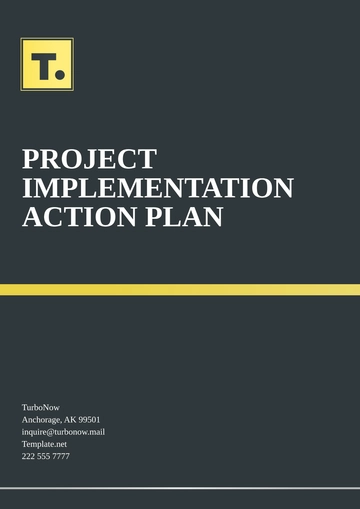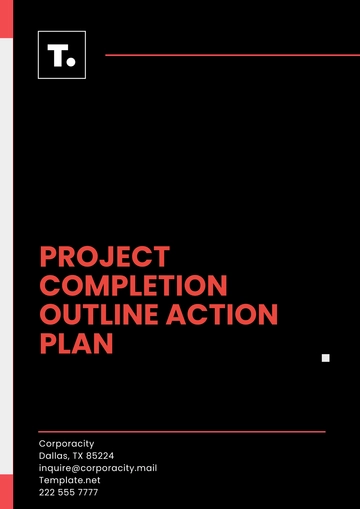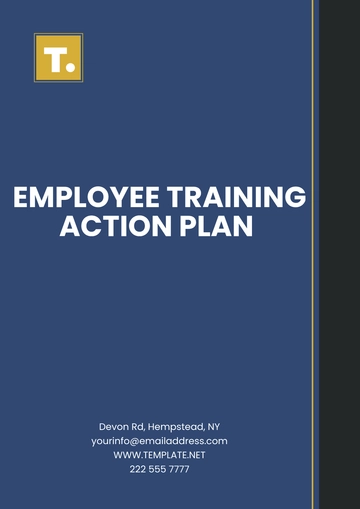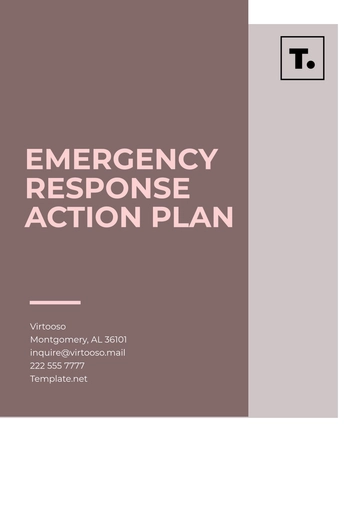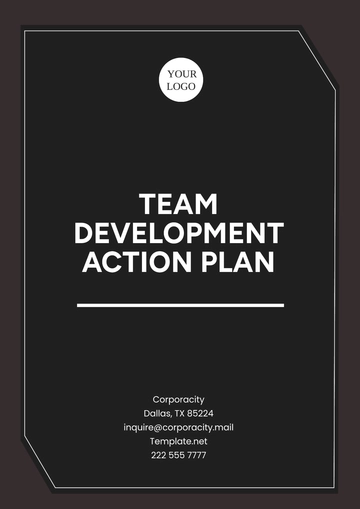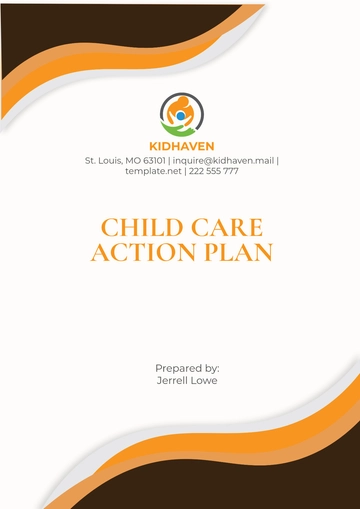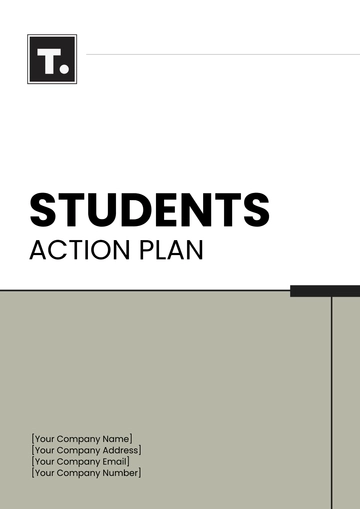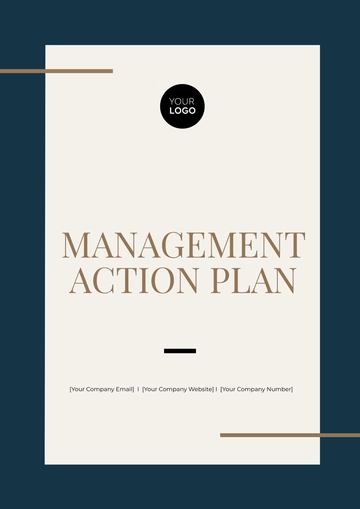Free Restaurant Emergency Action Plan
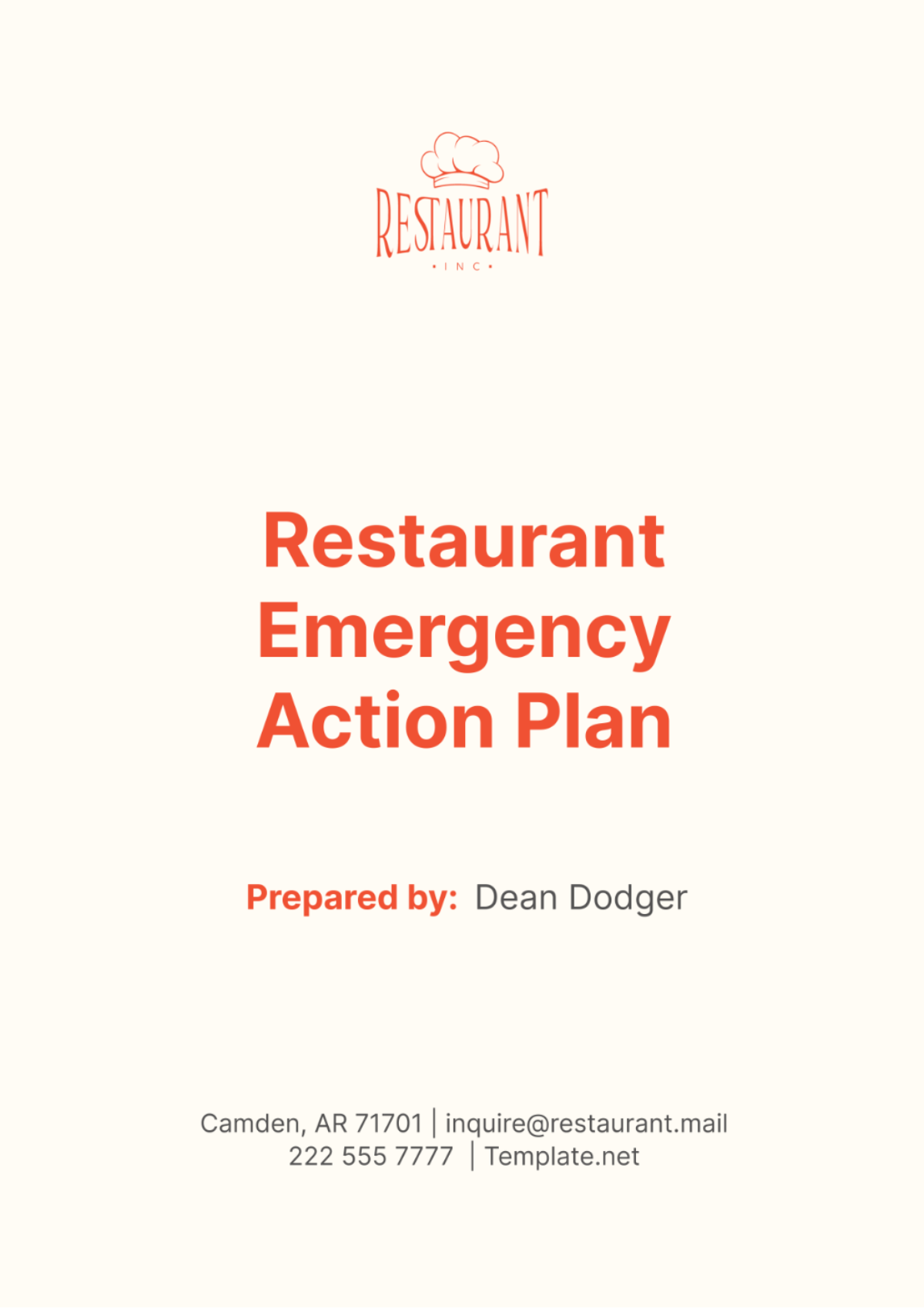
I. Introduction
A. Purpose of the EAP
The Restaurant Emergency Action Plan (EAP) aims to provide clear guidance and procedures for all staff and patrons to follow in emergencies, ensuring their safety and minimizing potential risks. By outlining specific actions to be taken during various emergency scenarios, this plan helps mitigate panic and confusion, facilitating an organized and efficient response.
B. Scope and Applicability
This EAP applies to all employees and patrons of [Your Company Name], irrespective of their role or position within the establishment. It covers a wide range of emergency situations, including fires, medical emergencies, natural disasters, and criminal incidents, to ensure comprehensive preparedness and response strategies.
C. Legal and Regulatory Compliance
This EAP is developed in accordance with the safety regulations and guidelines set forth by [State] authorities and relevant regulatory bodies. By adhering to these legal requirements, [Your Company Name] demonstrates its commitment to maintaining a safe environment for both employees and customers.
II. Emergency Contacts
A. Emergency Services
In the event of an emergency, immediate access to emergency services is vital. Staff members are trained to dial 911 for police, fire department, or medical assistance, ensuring swift response and support in critical situations.
B. Management Team Contacts
The management team plays a crucial role in coordinating emergency responses and ensuring effective communication within the establishment. Their contact information is readily available to facilitate prompt decision-making and action during emergencies.
C. Key Personnel Contacts
Designated key personnel, such as the head chef and shift supervisor, are integral to implementing emergency procedures and providing guidance to staff and patrons. Their contact details are listed to enable quick communication and coordination of efforts during emergencies.
D. External Contacts
Establishing communication channels with external parties, such as building management and utility companies, is essential for addressing facility-related emergencies or service disruptions. Having their contact information readily accessible ensures timely resolution of issues that may impact the safety and operations of the restaurant.
III. Emergency Procedures
A. Fire Emergencies
Fire emergencies pose a significant risk to the safety of individuals and the property. Clear evacuation procedures, coupled with awareness of fire suppression equipment locations and assembly points, are essential for ensuring a swift and orderly evacuation in the event of a fire.
B. Medical Emergencies
Medical emergencies require prompt attention and appropriate first aid interventions. Trained staff members should be prepared to administer first aid as needed and initiate contact with emergency medical services to ensure timely medical assistance for individuals in distress.
C. Natural Disasters
Natural disasters, such as earthquakes or hurricanes, may necessitate sheltering in place or evacuation depending on the severity of the situation. Establishing designated safe zones within the restaurant and securing loose items are key measures to minimize the risk of injury and damage during such emergencies.
D. Criminal Incidents
Criminal incidents, such as robberies or active shooter situations, require a swift and coordinated response to ensure the safety of patrons and staff. Lockdown procedures, coupled with communication with law enforcement, are critical for mitigating risks and facilitating a safe resolution of the situation.
IV. Evacuation Plan
A. Evacuation Routes
Evacuation routes are strategically planned to provide clear pathways to safety, taking into account the layout of the restaurant and accessibility considerations. Staff members are trained to guide patrons along these routes during emergencies, ensuring a swift and orderly evacuation process.
B. Exit Locations and Accessibility
Exit locations are prominently marked and kept unobstructed to facilitate easy egress for patrons and staff. Accessibility features, such as ramps and handrails, are in place to accommodate individuals with mobility challenges and ensure their safe evacuation from the premises.
C. Evacuation Diagrams and Signage
Evacuation diagrams and signage are prominently displayed throughout the restaurant, providing visual guidance to occupants on evacuation routes, assembly points, and the location of emergency equipment. These visual aids serve as valuable reference points during emergencies, aiding in swift decision-making and navigation.
D. Assistance for Customers with Disabilities
Staff members are trained to provide assistance to customers with disabilities during evacuations, utilizing designated evacuation aids and communication techniques as necessary. Ensuring the safety and well-being of all patrons, regardless of their abilities, is a priority in the evacuation plan.
V. Emergency Equipment and Resources
A. Fire Extinguishers
Fire extinguishers are strategically positioned in accordance with fire safety regulations, ensuring adequate coverage of all areas within the restaurant. Regular inspections and maintenance are conducted to verify their functionality and readiness for use in the event of a fire emergency.
B. First Aid Kits
First aid kits containing essential medical supplies are readily available throughout the restaurant, including in kitchen areas and dining spaces. Trained staff members are responsible for maintaining these kits and replenishing supplies as needed to ensure their effectiveness during medical emergencies.
C. Automated External Defibrillators (AEDs)
Automated External Defibrillators (AEDs) are accessible within the restaurant for use in cases of sudden cardiac arrest. Staff members are trained in their operation and instructed to retrieve and deploy AEDs promptly when needed, following established protocols for administering life-saving assistance.
D. Emergency Lighting and Power Sources
Emergency lighting systems are installed to provide illumination during power outages or low visibility conditions, ensuring safe evacuation and navigation within the restaurant. Backup power sources, such as generators or battery backups, are in place to maintain essential operations and communication systems during emergencies.
E. Communication Devices
Two-way radios or other communication devices are provided to key personnel to facilitate communication and coordination during emergencies. Staff members are trained in their use and instructed to maintain communication channels open to relay vital information and updates throughout the response process.
VI. Staff Responsibilities
A. Designated Roles during Emergencies
Each staff member is assigned specific roles and responsibilities during emergencies, such as assisting with evacuation, providing first aid, or communicating with emergency services. Clear guidelines are provided to ensure that all staff members understand their duties and can perform them effectively under pressure.
Role | Responsibilities |
|---|---|
Evacuation Coordinator | Oversees the evacuation process, ensures all patrons and staff evacuate safely, and reports to management. |
First Aid Responder | Provides immediate first aid assistance to injured individuals and coordinates with emergency services. |
Crowd Control Monitor | Maintains order and guides patrons to designated evacuation routes, preventing congestion and confusion. |
Communication Liaison | Facilitates communication between staff members, relays updates from management, and contacts emergency services as needed. |
B. Training Requirements
Staff members undergo regular training sessions to familiarize themselves with emergency procedures outlined in the EAP. Training includes simulations and drills to practice response protocols and enhance readiness for real-life emergency scenarios.
C. Communication Protocols
Effective communication is vital during emergencies to coordinate actions and convey critical information. Staff members are trained to utilize designated communication channels, such as two-way radios or verbal cues, to communicate with each other and with management throughout the response process.
D. Emergency Drills and Exercises
Periodic emergency drills and exercises are conducted to test the effectiveness of the EAP and identify areas for improvement. Feedback from drills is used to refine procedures, enhance staff preparedness, and ensure a coordinated response to emergencies.
VII. Communication Plan
A. Internal Communication (Staff Alerts)
Internal communication protocols are established to alert staff members quickly and efficiently in the event of an emergency. This may include using alarms, verbal announcements, or electronic communication systems to disseminate urgent information and instructions.
B. External Communication (Customer Alerts)
External communication strategies are implemented to notify patrons of emergencies and provide guidance on appropriate actions to take. This may involve using public address systems, signage, or direct communication from staff members to ensure that customers are informed and can respond appropriately.
C. Communication with Emergency Services
Communication procedures with emergency services are outlined to facilitate swift and effective coordination during emergencies. Staff members are trained to provide accurate and concise information to emergency responders, enabling them to assess the situation and provide appropriate assistance.
D. Updates and Information Dissemination
Regular updates and information dissemination are essential to keep all stakeholders informed of developments during emergencies. Staff members are responsible for providing updates to patrons and fellow employees as information becomes available, ensuring transparency and reducing anxiety.
VIII. Continuity of Operations
A. Temporary Closure Procedures
Protocols are established for temporary closure of the restaurant in the event of an emergency that renders it unsafe or inaccessible. This includes securing the premises, notifying authorities, and communicating closure information to staff and customers.
B. Essential Operations Maintenance
Measures are in place to maintain essential operations, such as food safety and security, during and after emergencies. This may involve implementing alternative methods for food storage, sanitation, and inventory management to ensure continuity of essential services.
C. Recovery and Resumption of Normal Operations
Plans are developed for the recovery and resumption of normal operations following an emergency. This includes assessing damages, implementing repairs, and gradually reopening the restaurant in compliance with regulatory requirements and safety standards.
D. Post-Emergency Evaluation and Improvement
After-action evaluations are conducted to assess the effectiveness of the emergency response and identify areas for improvement. Feedback from stakeholders, including staff, customers, and emergency responders, is used to update the EAP and enhance preparedness for future emergencies.
IX. Review and Revision
A. Regular EAP Reviews and Updates
The EAP is reviewed and updated regularly to reflect changes in operations, personnel, or regulations. This ensures that the plan remains current and effective in addressing emerging threats and evolving circumstances.
B. Documentation of Changes
Changes to the EAP are documented, including the rationale behind revisions and the date of implementation. This documentation serves as a record of compliance with regulatory requirements and facilitates accountability in maintaining a safe working environment.
C. Training and Communication of Revisions
Revised EAP procedures are communicated to all staff members through training sessions and informational materials. Staff members are provided with opportunities to ask questions and clarify their roles and responsibilities under the updated plan.
- 100% Customizable, free editor
- Access 1 Million+ Templates, photo’s & graphics
- Download or share as a template
- Click and replace photos, graphics, text, backgrounds
- Resize, crop, AI write & more
- Access advanced editor
Enhance restaurant safety with the Restaurant Emergency Action Plan Template from Template.net. This editable and customizable template provides a comprehensive framework for creating tailored emergency plans. With intuitive features and an AI Editor Tool, effortlessly design evacuation procedures, contact lists, and seating arrangements to ensure the safety and well-being of patrons and staff alike.




